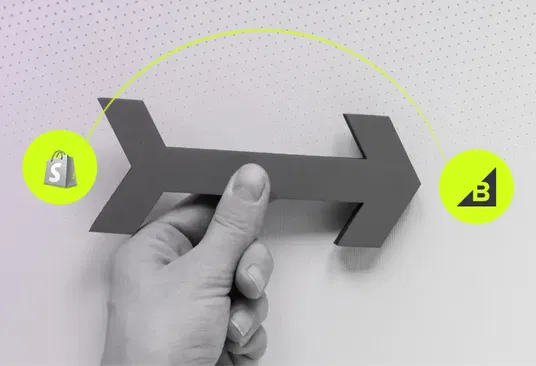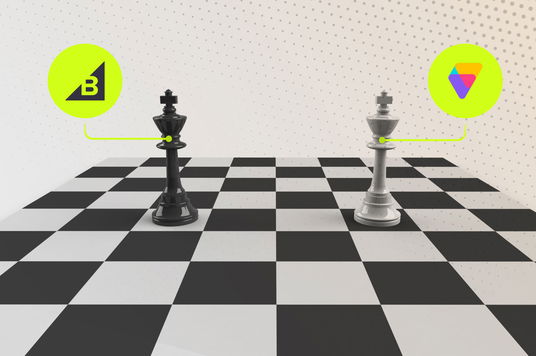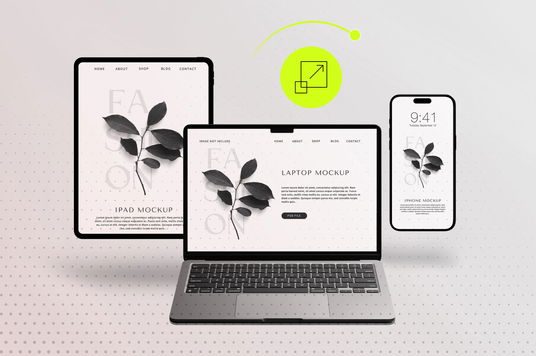From Racks to Revenue – Building Scalable Fashion eCommerce Stores

- The Digital Transformation of Fashion Retail
- Understanding Fashion eCommerce Scalability
- Building Scalable Technical Architecture
- Scalable Inventory and Catalog Management
- Revenue Stream Optimization
- Scaling Through Growth Stages
- Automation and Operational Efficiency
- International Scaling Strategies
- Measuring Scalable Success
- Frequently Asked Questions
- Key Takeaways
The Digital Transformation of Fashion Retail
The fashion industry is experiencing its most significant transformation in decades. Traditional brick-and-mortar retailers are discovering that scalable fashion eCommerce stores aren't just an additional sales channel—they're the key to sustainable growth and profitability in the digital age.
The shift from physical racks to digital revenue streams represents more than just moving inventory online. It's about creating scalable systems that can grow exponentially without proportional increases in operational complexity or costs.
The Scalability Advantage
Fashion brands with properly designed scalable eCommerce systems can handle 10x traffic increases during peak seasons, expand to new markets overnight, and add thousands of products without breaking their operational workflows.
This comprehensive guide reveals how to build fashion eCommerce stores that scale efficiently, maximize revenue per customer, and create sustainable competitive advantages in an increasingly crowded marketplace.
"The most successful fashion brands of the next decade won't be those with the best products—they'll be those with the most scalable digital infrastructure and revenue optimization systems."
— Fashion Technology Institute 2025
Understanding Fashion eCommerce Scalability
Scalability in fashion eCommerce goes beyond handling more traffic or products. It encompasses technical scalability, operational scalability, and revenue scalability working in harmony.
The Three Pillars of Fashion eCommerce Scalability
Non-Scalable Approach
- Manual inventory management
- Single-channel sales focus
- Fixed infrastructure costs
- Linear growth patterns
- Reactive problem-solving
Scalable Architecture
- Automated systems and workflows
- Omnichannel revenue streams
- Elastic infrastructure scaling
- Exponential growth potential
- Predictive optimization
Revenue Scalability Metrics
Successful scalable fashion stores focus on metrics that compound over time:
💡 Scalability Reality: Fashion brands with properly designed scalable systems see 3-5x revenue growth in their second year while reducing per-order operational costs by 50-70%. Our fashion eCommerce development services focus specifically on building these scalable foundations.
Building Scalable Technical Architecture
The technical foundation determines whether your fashion store can scale smoothly or hits performance walls as it grows.
Cloud-Native Infrastructure
Modern scalable fashion stores require cloud-native architecture that can adapt to demand:
Essential Infrastructure Components:
- Auto-Scaling Servers: Automatically adjust capacity based on traffic patterns
- Content Delivery Networks (CDN): Global image and content distribution
- Database Optimization: Distributed databases that scale with product catalogs
- Caching Layers: Multiple caching strategies for different content types
- Load Balancing: Distribute traffic across multiple servers efficiently
Microservices Architecture for Fashion
Break down your fashion eCommerce system into scalable, independent services:
- Product Catalog Service: Handle product information, variants, and inventory independently
- User Management Service: Customer accounts, preferences, and personalization data
- Order Processing Service: Checkout, payment processing, and order fulfillment
- Recommendation Engine: AI-powered product suggestions and personalization
- Analytics Service: Real-time data processing and business intelligence
API-First Development
Design your fashion store with API-first architecture to enable:
- Omnichannel Integration: Connect with social media, marketplaces, and mobile apps
- Third-Party Integrations: Easy connection with fashion-specific tools and services
- Headless Commerce: Separate frontend and backend for ultimate flexibility
- Future-Proofing: Add new channels and features without rebuilding core systems
🏗️ Architecture Investment: While API-first, microservices architecture requires higher initial investment, it reduces long-term scaling costs by 60-80% and enables 5x faster feature development as you grow.
Scalable Inventory and Catalog Management
Fashion inventory management becomes exponentially complex as you scale. Smart systems are essential for maintaining efficiency.
Dynamic Inventory Management
Move beyond static inventory tracking to dynamic, predictive systems:
Advanced Inventory Features:
- Real-Time Sync: Instant inventory updates across all sales channels
- Predictive Restocking: AI-powered demand forecasting and automatic reordering
- Seasonal Optimization: Automated inventory adjustments for fashion seasons
- Variant Management: Handle complex size, color, and style combinations efficiently
- Dead Stock Prevention: Early warning systems for slow-moving inventory
Scalable Product Information Management (PIM)
As your catalog grows, product information management becomes critical:
| Catalog Size | Management Approach | Key Tools Needed |
|---|---|---|
| 100-500 Products | Manual management with templates | Spreadsheets, basic PIM |
| 500-5,000 Products | Semi-automated with workflows | Advanced PIM, automation rules |
| 5,000+ Products | Fully automated with AI assistance | Enterprise PIM, AI content generation |
Multi-Channel Inventory Synchronization
Scalable fashion brands sell across multiple channels simultaneously:
- eCommerce Website: Primary direct-to-consumer channel
- Social Commerce: Instagram, TikTok, Facebook shops
- Marketplaces: Amazon, eBay, fashion-specific platforms
- Wholesale Portals: B2B sales to retailers and distributors
- Physical Stores: Omnichannel inventory for brick-and-mortar locations
Revenue Stream Optimization
Scalable fashion stores maximize revenue through diversified streams and optimization strategies.
Multiple Revenue Streams
Don't rely solely on product sales. Successful scalable fashion brands develop multiple revenue streams:
Primary Revenue Streams
- Direct product sales with optimized pricing strategies
- Subscription services (styling, rental, exclusive access)
- Limited edition and exclusive collections
- Personalization and customization services
Secondary Revenue Streams
- Affiliate marketing and brand partnerships
- Licensing and white-label opportunities
- Fashion consulting and styling services
- Educational content and courses
Dynamic Pricing Strategies
Implement intelligent pricing that scales with demand and inventory levels:
- Demand-Based Pricing: Adjust prices based on real-time demand signals
- Inventory-Driven Pricing: Automatic markdowns for slow-moving items
- Seasonal Pricing: Optimize prices for fashion seasons and trends
- Personalized Pricing: Customer-specific pricing based on behavior and loyalty
Customer Lifetime Value Optimization
Focus on metrics that compound over time:
💰 Revenue Optimization: Fashion brands with diversified revenue streams and dynamic pricing see 40-60% higher profitability and 3x better resilience during market downturns.
Scaling Through Growth Stages
Successful fashion eCommerce scaling happens in predictable stages, each requiring different strategies and investments.
Stage 1: Foundation (0-$1M Revenue)
Focus Areas
- Establish core brand identity and product-market fit
- Build scalable technical foundation
- Develop efficient operational processes
- Create high-quality content and photography systems
Key Investments: Platform development, content creation, initial inventory, basic automation tools
Success Metrics: Conversion rate >2%, customer acquisition cost <$50, positive unit economics
Stage 2: Growth (1M-$10M Revenue)
Focus Areas
- Scale marketing and customer acquisition
- Expand product catalog and categories
- Implement advanced personalization
- Develop omnichannel presence
Key Investments: Marketing automation, advanced analytics, inventory management systems, team expansion
Success Metrics: 50%+ YoY growth, customer lifetime value >$200, repeat purchase rate >40%
Stage 3: Scale ($10M+ Revenue)
Focus Areas
- International expansion and localization
- Advanced AI and automation implementation
- Strategic partnerships and acquisitions
- Sustainable and ethical fashion initiatives
Key Investments: International infrastructure, AI/ML systems, sustainability programs, strategic partnerships
Success Metrics: Market leadership position, 30%+ profit margins, global brand recognition
Automation and Operational Efficiency
Scalable fashion stores rely heavily on automation to maintain efficiency as they grow.
Marketing Automation
Automate customer journey touchpoints to scale personalization:
- Welcome Series: Automated onboarding sequences for new customers
- Behavioral Triggers: Personalized emails based on browsing and purchase behavior
- Seasonal Campaigns: Automated marketing for fashion seasons and trends
- Win-Back Campaigns: Re-engage inactive customers with targeted offers
- Loyalty Programs: Automated rewards and tier progression systems
Operations Automation
Streamline backend operations for scalable efficiency:
- Order Processing: Automated order routing and fulfillment workflows
- Inventory Management: Automatic reordering and stock level optimization
- Customer Service: AI chatbots for common inquiries and support routing
- Returns Processing: Automated return authorization and processing
- Quality Control: Automated product information validation and updates
Financial Automation
Automate financial processes to maintain accuracy at scale:
- Revenue Recognition: Automated accounting for complex fashion business models
- Tax Compliance: Automatic tax calculation for multiple jurisdictions
- Profitability Analysis: Real-time profit margin tracking by product and category
- Cash Flow Management: Automated payment processing and reconciliation
✅ Automation ROI: Fashion brands with comprehensive automation systems reduce operational costs by 50-70% while handling 5-10x more orders with the same team size.
International Scaling Strategies
Global expansion is often the key to achieving significant scale in fashion eCommerce.
Market Entry Strategy
Approach international expansion systematically:
| Expansion Phase | Target Markets | Key Considerations |
|---|---|---|
| Phase 1 | English-speaking markets (UK, Australia, Canada) | Similar culture, minimal localization needed |
| Phase 2 | European markets (Germany, France, Netherlands) | GDPR compliance, currency, language localization |
| Phase 3 | Asian markets (Japan, South Korea, Singapore) | Cultural adaptation, local partnerships, sizing differences |
Localization Requirements
Successful international scaling requires comprehensive localization:
- Language Translation: Professional translation of all content and product descriptions
- Cultural Adaptation: Adjust imagery, colors, and messaging for local preferences
- Sizing Localization: Convert sizing systems and provide local size guides
- Payment Methods: Integrate popular local payment options
- Shipping and Logistics: Local fulfillment centers and shipping partners
- Legal Compliance: Meet local regulations for eCommerce, data privacy, and consumer protection
Measuring Scalable Success
Track metrics that indicate true scalability, not just growth.
Scalability KPIs
Focus on metrics that improve as you scale:
Advanced Analytics for Scale
Implement analytics systems that provide actionable insights:
- Predictive Analytics: Forecast demand, trends, and customer behavior
- Cohort Analysis: Track customer lifetime value and retention by acquisition channel
- Attribution Modeling: Understand the true impact of marketing investments
- Profitability Analysis: Real-time profit tracking by product, category, and channel
📊 Analytics Investment: Fashion brands with advanced analytics systems make 25% better business decisions and achieve 40% higher profitability through data-driven optimization. Our fashion eCommerce development services include comprehensive analytics setup and optimization.
Frequently Asked Questions
What's the difference between growth and scalability in fashion eCommerce?
Growth means increasing revenue, while scalability means increasing revenue without proportionally increasing costs or complexity. A scalable fashion store can handle 10x more orders with only 2x more resources through automation, efficient systems, and optimized processes.
How much should I invest in building a scalable fashion eCommerce platform?
Initial investment for a truly scalable fashion platform ranges from $200,000 to $1M+ depending on complexity and features. While higher than basic stores, scalable platforms reduce long-term costs by 60-80% and enable exponential growth without rebuilding.
When should I start thinking about scalability?
From day one. It's much more expensive to retrofit scalability than to build it from the beginning. Fashion brands that plan for scale from launch achieve 3-5x better growth rates and avoid costly platform migrations later.
What are the biggest scalability challenges in fashion eCommerce?
The biggest challenges are inventory complexity, seasonal demand fluctuations, international expansion, and maintaining personalization at scale. These require specialized systems and automation that generic eCommerce platforms often can't handle effectively.
How do I know if my fashion store is truly scalable?
Key indicators include: decreasing customer acquisition costs as you grow, increasing profit margins with volume, ability to handle 10x traffic spikes, and adding new markets/products without operational strain. If these metrics aren't improving, your system isn't truly scalable.
Should I build custom or use existing platforms for scalability?
It depends on your scale and requirements. Platforms like Shopify Plus and BigCommerce work well up to $50M revenue. Beyond that, or for unique business models, custom solutions often provide better scalability and lower long-term costs.
How important is automation for fashion eCommerce scalability?
Automation is critical. Fashion brands with comprehensive automation handle 5-10x more orders with the same team size and reduce operational costs by 50-70%. Without automation, scaling becomes prohibitively expensive and error-prone.
What's the ROI timeline for scalable fashion eCommerce investments?
Most scalable fashion platforms show positive ROI within 12-18 months and 3-5x ROI within 3 years. The higher initial investment pays for itself through reduced operational costs, higher conversion rates, and ability to capture more market opportunities.
Key Takeaways
Building scalable fashion eCommerce stores is about creating systems that grow exponentially while costs grow linearly. It's the difference between building a business that requires constant manual intervention and one that runs efficiently at any scale.
The transformation from racks to revenue isn't just about moving online—it's about reimagining how fashion businesses can operate in the digital age:
- Technical Scalability: Cloud-native, API-first architecture that grows with your business
- Operational Scalability: Automated systems that handle complexity without human intervention
- Revenue Scalability: Multiple revenue streams and optimization strategies that compound over time
- Global Scalability: Systems designed for international expansion from day one
- Financial Scalability: Unit economics that improve with scale, not deteriorate
The most successful fashion brands of the next decade will be those that invest in scalable infrastructure early, automate relentlessly, and optimize for long-term growth rather than short-term gains.
The Scalability Advantage
Fashion brands with properly designed scalable systems achieve 3-5x revenue growth while reducing per-order costs by 60-80%. They can expand to new markets in weeks, not months, and handle seasonal peaks without operational strain.
"The future belongs to fashion brands that can scale efficiently. Those that build scalable systems from the beginning will dominate their markets, while those that don't will struggle to compete."
— 1Center Scalable Commerce Team
Ready to Build Your Scalable Fashion Empire?
Don't let scalability challenges limit your fashion brand's potential. Our team specializes in building scalable fashion eCommerce systems that grow with your business, reduce operational complexity, and maximize profitability at every stage of growth.
Get Your Free Scalability Assessment →
Or explore our comprehensive fashion eCommerce development services to see how we can help transform your fashion business from racks to revenue.
About 1Center
1Center is a leading eCommerce development agency specializing in scalable fashion and apparel solutions. Our team has built scalable systems for fashion brands ranging from startups to $100M+ enterprises. We understand the unique challenges of fashion eCommerce scaling and have developed proven methodologies that ensure sustainable, profitable growth at every stage of your business journey.
Written byPublished June 01, 2025
1Center


